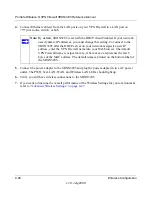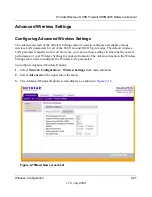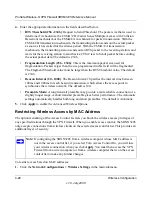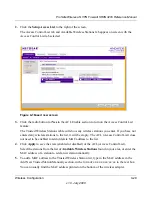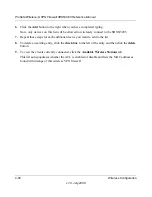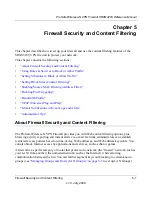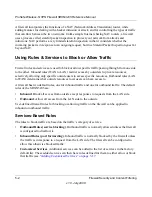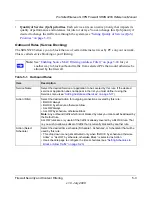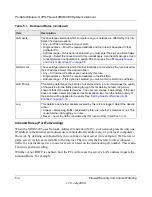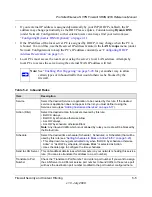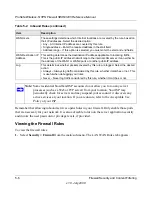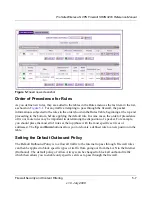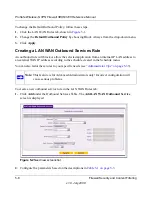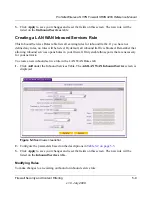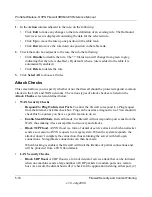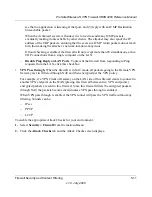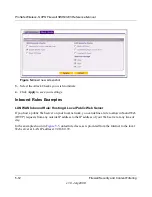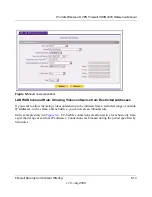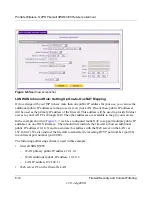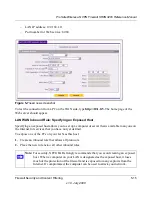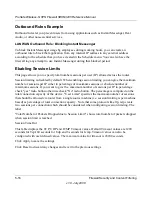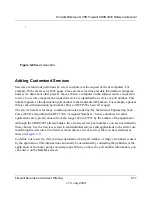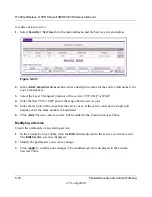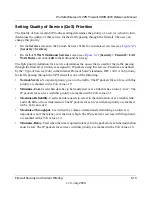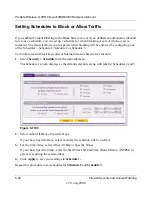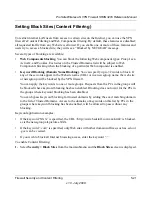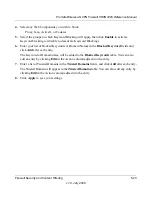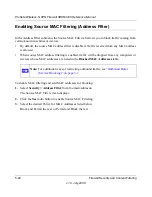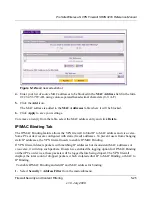
ProSafe Wireless-N VPN Firewall SRXN3205 Reference Manual
5-10
Firewall Security and Content Filtering
v1.0, July 2008
1.
In the
Action
column adjacent to the rule, do the following:
•
Click
Edit
to make any changes to the rule definition of an existing rule. The Outbound
Service screen is displayed containing the data for the selected rule.
•
Click
Up
to move the rule up one position in the table rank.
•
Click
Down
to move the rule down one position in the table rank.
2.
Check the radio box adjacent to the rule, then do the following:
•
Click
Disable
to disable the rule. The “!” Status icon will change from green to grey,
indicating that the rule is disabled. (By default, when a rule is added to the table it is
automatically enabled.)
•
Click
Delete
to delete the rule.
3.
Click
Select All
to choose all rules.
Attack Checks
This screen allows you to specify whether or not the firewall should be protected against common
attacks in the LAN and WAN networks. The various types of attack checks are listed on the
Attack Checks
screen and defined below:
•
WAN Security Checks
–
Respond To Ping On Internet Ports
. To allow the firewall to respond to a Ping request
from the Internet, click this check box. Ping can be used as a diagnostic tool. You shouldn't
check this box unless you have a specific reason to do so.
–
Enable Stealth Mode
. In stealth mode, the firewall will not respond to port scans from the
WAN, thus making it less susceptible to discovery and attacks.
–
Block TCP Flood
. A SYN flood is a form of denial of service attack in which an attacker
sends a succession of SYN requests to a target system. When the system responds, the
attacker doesn’t complete the connection, thus saturating the server with half-open
connections. No legitimate connections can then be made.
When blocking is enabled, the firewall will limit the lifetime of partial connections and
will be protected from a SYN flood attack.
•
LAN Security Checks
–
Block UDP flood.
A UDP flood is a form of denial of service attack that can be initiated
when one machine sends a large number of UDP packets to random ports on a remote
host. As a result, the distant host will (1) check for the application listening at that port, (2)

